Choosing the right bicep and forearm exercises for your bicep and forearm workout can mean the difference between building the arms of your dreams and stalling your progress for months—or worse, giving yourself a catastrophic wrist injury.
Related: Best bicep exercises for size
Bicep and forearm workout mistakes
Training your biceps and forearm muscles together is a great time-saving technique. Yet so many people blow it. Avoid these 3 mistakes, and you won’t become part of the small-armed masses.
Training forearms first
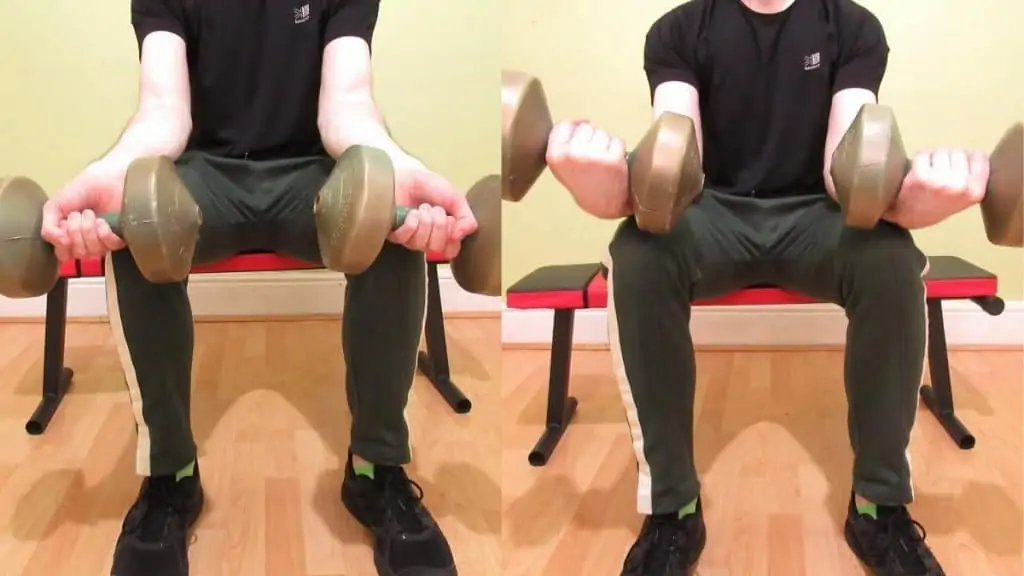
Want a surefire way to have small biceps for life?
Train your forearms first in the workout.
I can guarantee that holding onto a barbell or dumbbell for curls with a gnarly forearm pump will feel like you’re holding onto a cliff edge for dear life.
Always train your biceps first. Remember, curls actually work the flexors of the forearms very well; it’s the extensors that most people need to focus on.
More on those in just a minute.
Related posts
Neglecting the wrist extensors
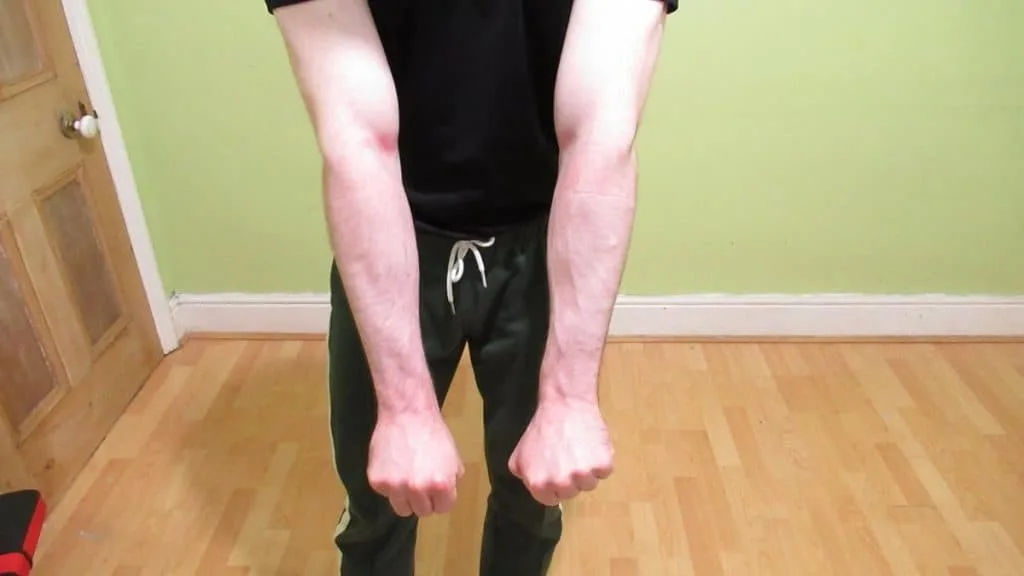
Besides a meathead that skips leg day, nothing looks weirder than big meaty forearm flexors paired with comparatively tiny extensors.
Now, since the extensors have such a low force output potential to begin with, you can actually train them last in your bicep forearm workout without any consequences.
If anything, you actually want to train the extensors really light (shoot for 20-30 reps) because they’re slow twitch as heck. Plus, if you perform even moderate reps, then you run the risk of giving yourself a debilitating wrist injury.
Doing excessive training volume
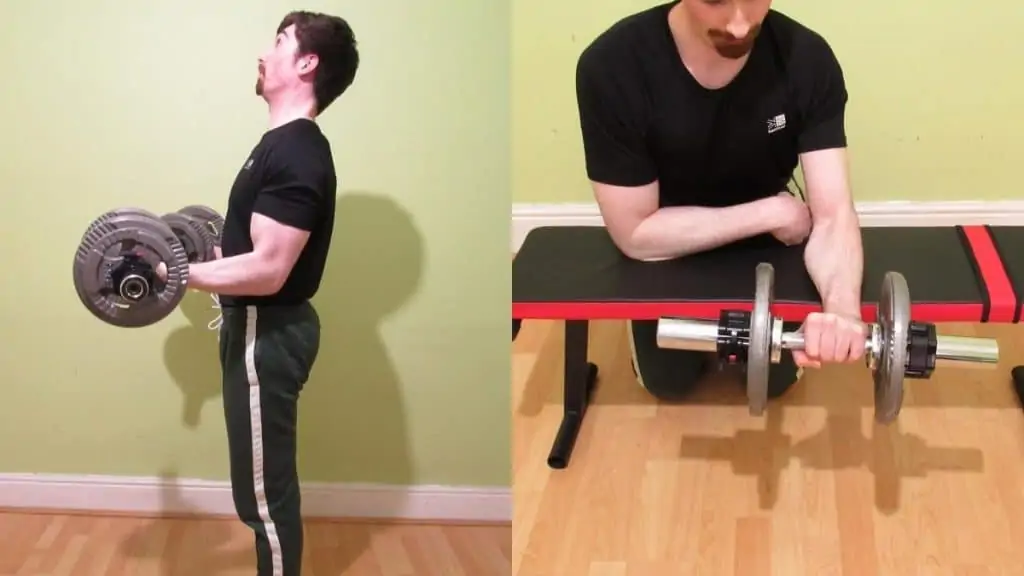
The forearm flexors already get hammered during bicep training, so you really want to keep your forearm flexor training volume moderate in order to prevent overtraining.
A few quality sets are worth more than 10 half-assed sets of half-rep wrist curls.
How to create your own bicep and forearm workout
I’ll give you some killer sample routines in just a sec, but if you want to create your own bicep forearm workout, then you need to consider these 3 crucial tips.
Assess your weak points

Assess YOUR weak points.
There are so many templated routines online (I know, the irony of me creating my own) that you can easily fool yourself into thinking we all have the same weaknesses.
News flash, we don’t.
If you’ve been doing wrist curls in your room since age 15, then you’re going to need a very different bicep forearm workout than someone who’s been avoiding forearm training like the plague.
Plan according to your physique. The mirror tells you everything that you need to know (if you’re willing to look in it objectively).
Plan out rep ranges
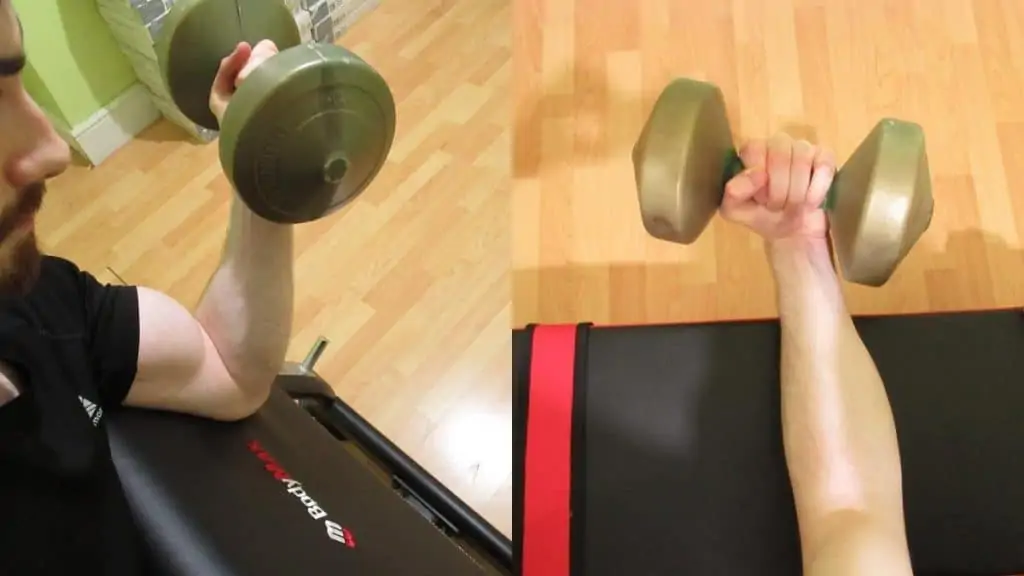
You’d never walk into the weight room and start banging out deadlifts for random reps. So why do it on other exercises?
I don’t know what it is, but for some reason, with forearms (calves and traps too), people just chase the pump with little regard for fundamental training principles like progressive overload.
That’s not how you make gains. At least not optimal gains.
Instead, choose a rep range for each exercise and increase the weight once you can do multiple sets in the top end of the rep range.
The exception to this, as I alluded to earlier, is the wrist extensors. [1] These muscles are so slow-twitch that it actually makes sense to chase the pump. And by chase it, I mean that you need to ride that pump out until the very end—until your forearms almost give out.
You need to make sure that you’re actually training close to failure and not just getting a nice little pump for your next gym selfie.
Consider supersets
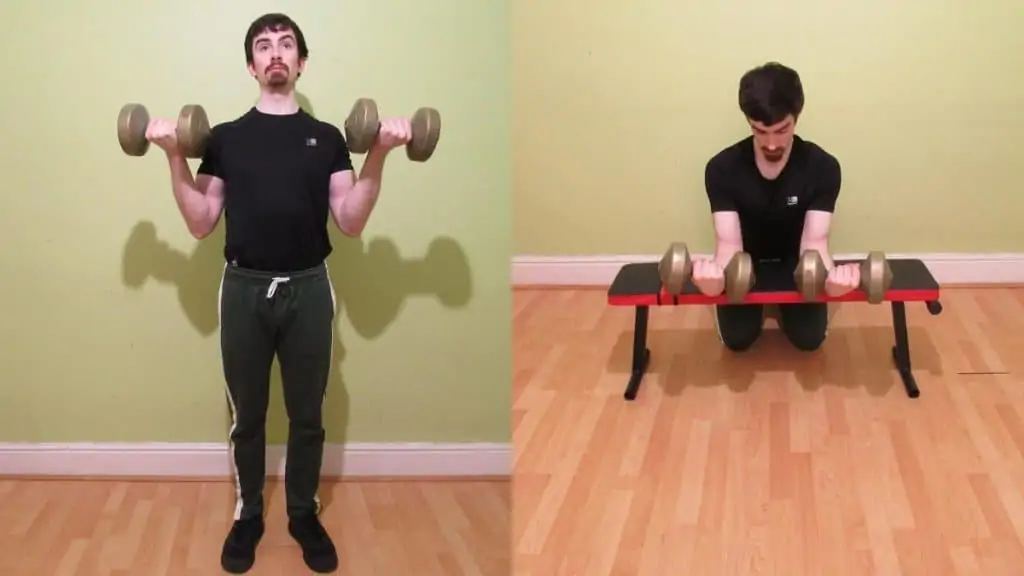
For your high rep training, forearm supersets work like a charm because they engorge the muscle with blood and ensure that you stay within close proximity to muscular failure, which maximizes actual muscle growth.
But since the extensors are already active in your flexor exercises (and vice versa), it’s best to stick to straight sets for your mass-building forearm work so that you don’t limit your strength.
Sample bicep and forearm workout routines
Workout 1: Strength
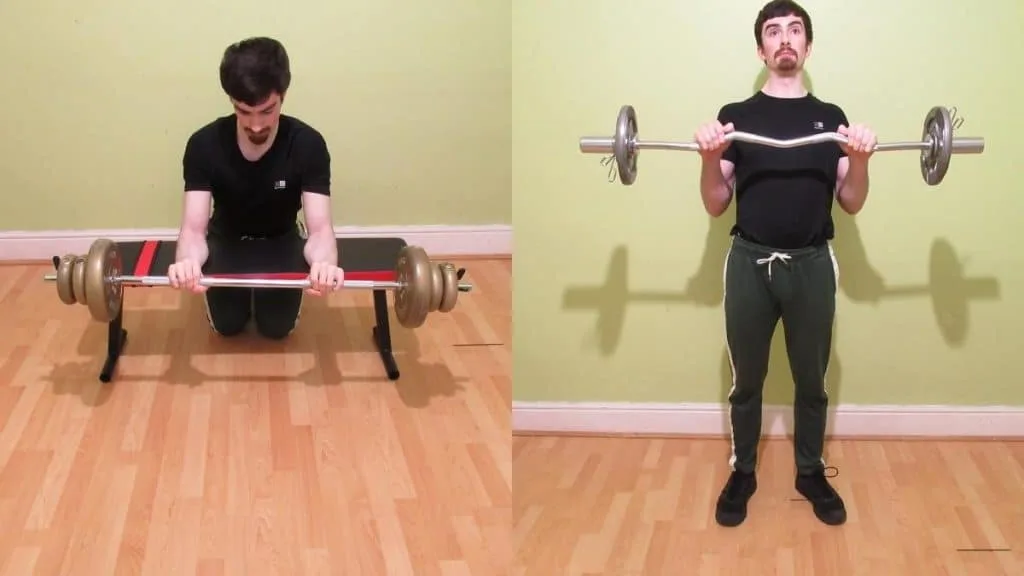
If you want to get strong at compound pulling movements like deadlifts and barbell rows, this is the forearm and bicep workout for you. We begin with heavy timed holds to tax our grip strength before adding size via tried and tested bicep and forearm isolation exercises.
Barbell static hold: 3 x 20 seconds (heavy weight)
EZ bar curl: 4 x 6-8 reps
EZ Reverse curl: 3 x 15 reps
Barbell wrist curls: 2 x 15 reps
Barbell reverse grip wrist curl: 3 x 20-30 reps
Workout 2: Size
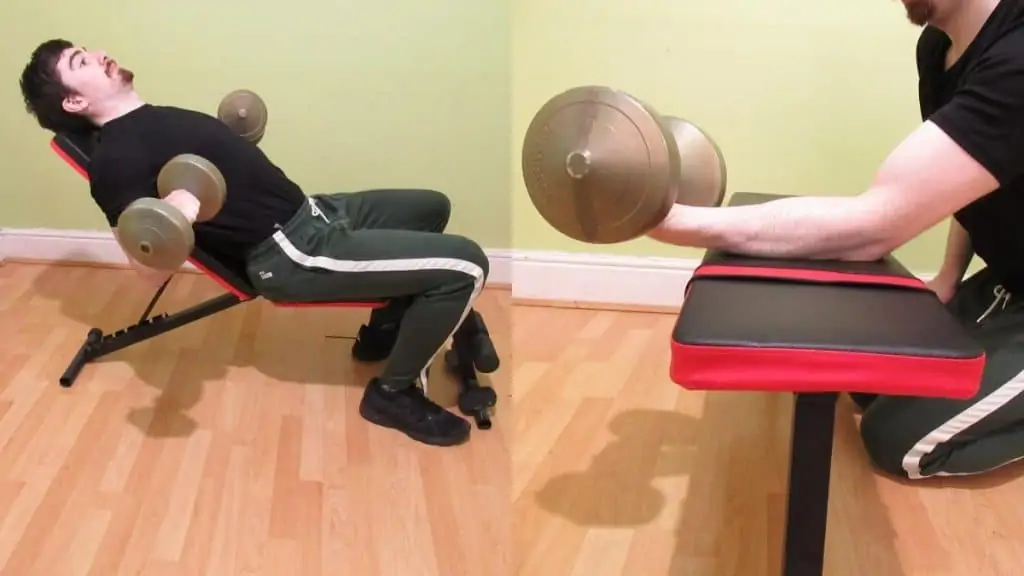
If you just want juicy forearms, then look no further than this simple but oh so effective mass-building routine. We start by hammering the biceps with incline curls and then work the biceps in their shortest position with preachers.
The reverse curl smashes the brachioradialis while sneaking in some extra bicep work, too.
Then we move onto the forearms, working on both size and that all-important grip strength.
Incline dumbbell curl: 4 x 8-10 reps
Preacher curl: 3 x 10-12 reps
Reverse curl (EZ bar): 3 x 15 reps
One arm dumbbell wrist curl: 3 x 12-15 reps
EZ curl bar wrist curls (reverse): 3 x 20-30 reps
Farmer’s walk: 3 x 30-second walks
Bicep and forearm workout inspiration
Looking for ideas for your next bicep and forearm workout? Check out our related guides below. Each one has sample routines for various goals such as size, strength, toning, and sports-specific training.
- Bicep tricep and forearm workout
- Cable forearm workout
- Forearm calisthenics
- Forearm dumbbell exercises
- Forearms workout at home
- Forearm workout for women
- Forearms workout with a backpack
- Kettlebell forearm exercises
- Forearm workouts with resistance bands
- Forearm and shoulder workout
Conclusion: What’s the best bicep and forearm workout for gains?
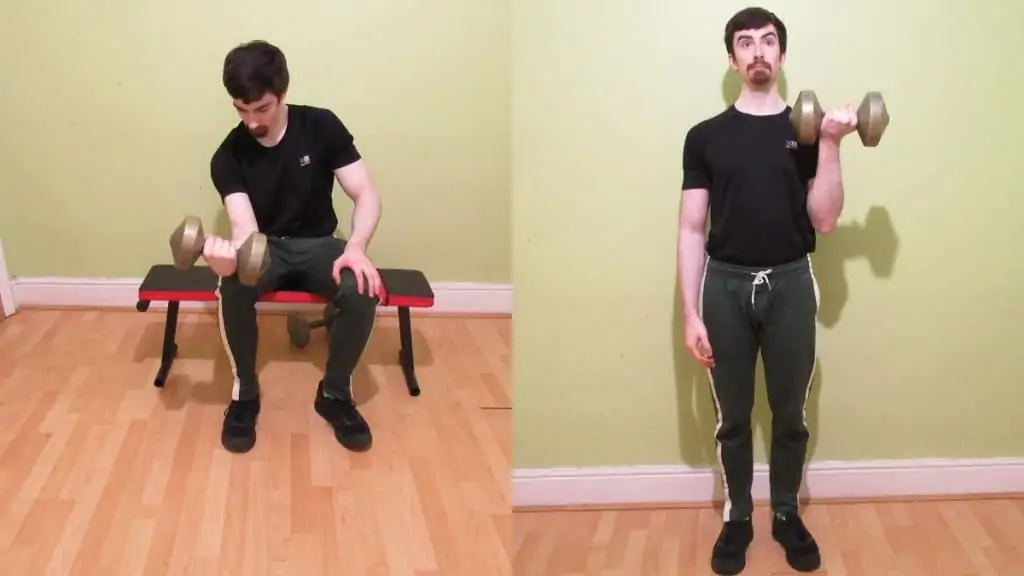
If your main goal is strength, then I like to split the bicep and forearm workout into 3 phases: grip, biceps, forearms.
The grip is so crucial for virtually every pulling exercise that you just have to train it first. The good thing is that static holds don’t really engage the biceps, unlike curls, [2] so we’re still going to be fresh when it comes time to train our beach muscles.
As for size, you should always train your biceps first because no good physique is complete with a pair of shirt-ripping upper arms.
You’ll also notice that there’s a bit more volume in the size workout. That’s because we use the grip work (the farmer’s carry) as a finisher rather than for developing maximum grip strength.
You’ll get a great grip and fantastic forearms from both routines (and big biceps, too), but depending on your priority, you’ll want to choose one or the other within any given training cycle.
References
- Anatomy, Shoulder and Upper Limb, Wrist Extensor Muscles. (2020, September 17). National Center for Biotechnology Information. https://www.ncbi.nlm.nih.gov/books/NBK534805/
- Marcolin, G., Panizzolo, F. A., Petrone, N., Moro, T., Grigoletto, D., Piccolo, D., & Paoli, A. (2018). Differences in electromyographic activity of biceps brachii and brachioradialis while performing three variants of curl. PeerJ, 6, e5165. https://doi.org/10.7717/peerj.5165

